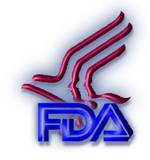Sign up for the Packaging Digest News & Insights newsletter.
Posted by Jack Mans
March 11, 2015
1 Min Read

FDA - Copy.jpg
"The iTrace for Blood Centers device has the ability to enhance blood safety by help
FDA - Copy.jpg
ing to ensure that unsuitable units are not released," said Karen Midthun, M.D., director of the FDA's Center for Biologics Evaluation and Research. "iTrace for Blood Centers will be used in blood establishments by trained personnel as a tool in streamlining blood collection and processing and aiding in product tracking and reconciliation."RFID is a tool widely used for identification and tracking of various objects. In a typical RFID system, a small memory-storage chip is placed on the item being tracked. RFID readers send and receive radio waves to detect chips and read their data. The iTrace RFID application is designed to augment existing blood bank systems and to work in conjunction with barcode identification and labeling processes currently in place.
iTrace for Blood Centers interfaces through a server with blood establishment computer software to receive and store data used by blood establishments during the manufacturing process, including information related to collection; component processing and labeling, including verifying the product code; expiration date; and blood type (ABO/Rh) information.
The device was cleared for marketing based on the submission of a premarket notification, often referred to as a 510(k). A 510(k) submission made to the FDA demonstrates that the device is at least as safe and effective as, that is, substantially equivalent to, a legally marketed device that is not subject to a premarket application.
SysLogic Inc., 877-780-6701, www.syslogicinc.com
About the Author(s)
You May Also Like


